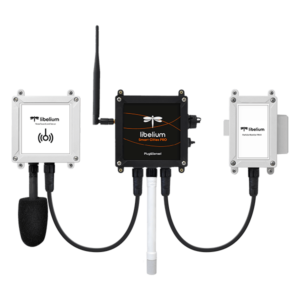Smart Cities
IOT Solutions
Smart cities seek sustainable growth, reducing the impact of economic and demographic changes, and leveraging information and communication technologies.
What does a Smart City imply?
|
|
IoT Solution for Smart Cities

What can be measured?
- Air quality, pollution
- Noise levels
- Waste management
- Lighting
- Parking
- Buildings
- People
- Parks and green areas
Benefits of IoT Technology for Smart Cities
- Smart cities typically improve the quality of life for citizens beyond saving money or achieving a return on investment. Saving money is not the primary driver. Holistic, pluralistic, and citizen-centered visions of smart cities, focused on improving services and solving urgent urban problems, will be the most effective and cost-efficient in the long run.
- SMART CITIES is a product designed to detect various basic parameters related to environmental conditions, noise levels, air quality, and brightness for various applications.
Features
- High-precision sensors (continuously improving). Calibrated gas sensors are useful for measuring the exact value in PPM of a gas concentration. They are designed for applications requiring precise readings and exact concentrations.
- Solar-powered
- Long-Lasting Battery
- The particulate matter sensor, commonly known as the "dust sensor," is integrated into the platform. This sensor allows for the measurement of PM1, PM2.5, and PM10 particles. This sensor also comes factory calibrated.
- Predictive and Preventive Models can Be Built
Physical characteristics:
- Minimum maintenance costs
- Weather-resistant enclosure
- Easy to implement
Models and Sensors
- Temperature, humidity, and pressure
- Noise level (dBA)
- Carbon monoxide (CO) for low concentrations
- Carbon dioxide (CO₂)
- Oxygen (O₂)
- Ozone (O₃)
- Nitric oxide (NO)
- High-precision nitrogen dioxide (NO₂)
- High-precision sulfur dioxide (SO₂)
- Ammonia (NH₃)
- Methane (CH₄) and combustible gas
- Hydrogen sulfide (H₂S)
- Particulate matter (PM1 / PM2.5 / PM10) – Dust 1
- Brightness (lux precision)
- Ultrasound

